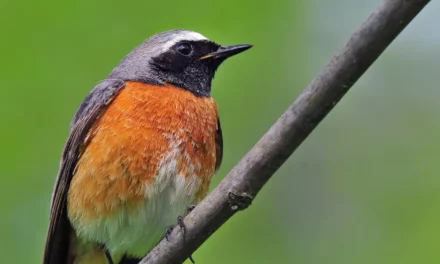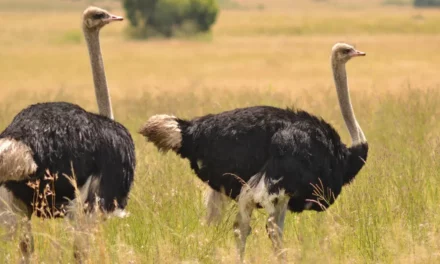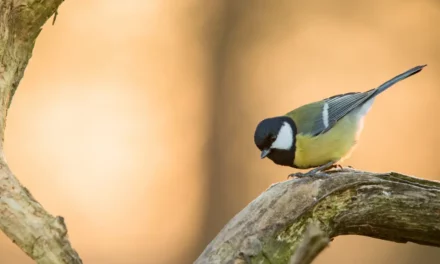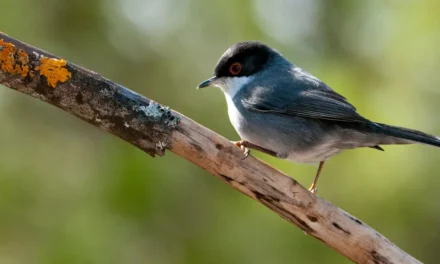Discover the birds that fly at incredible altitudes, their unique physiological adaptations, and the reasons why these species reach record heights during their migrations.
Birds capable of flying at very high altitudes exhibit a range of fascinating behaviors, physical adaptations, and migration strategies that allow them to survive and thrive in conditions where few other animals can venture.
Rüppell’s vulture: the bird that flies the highest
The Rüppell’s vulture (Gyps rueppelli), a large raptor native to the Sahel, holds the record for the highest flight ever observed for a bird, at an astonishing altitude of 11,300 meters. This feat was documented in November 1973 when a Rüppell’s vulture collided with a commercial aircraft over the city of Abidjan. At this altitude, the vulture was flying 600 meters higher than the standard cruising altitude of a commercial airplane (10,668 meters).
To learn more about how birds avoid collisions in flight, check out our practical guide.
This vulture, with a wingspan reaching up to 2.5 meters, uses air currents to fly and can travel up to 150 km searching for carcasses, its primary food source as a scavenger. It can reach a speed of 35 km/h and fly up to 7 hours a day without tiring, gliding with slow wing beats or powerful winds. This gregarious species, living in colonies, is unfortunately listed as “critically endangered” by the International Union for Conservation of Nature (IUCN).
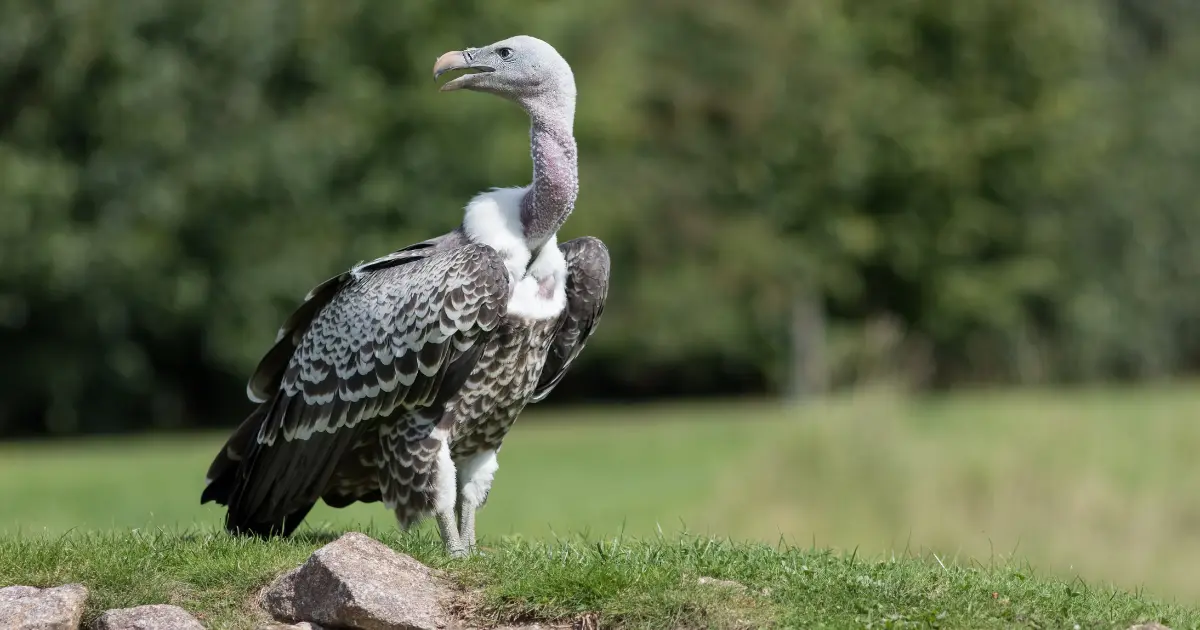
The common crane: a high-altitude migrator
The common crane (Grus grus), a migratory bird belonging to the Gruidae family, is another remarkable example of a bird capable of flying at high altitudes. This species is known for its spectacular migration and its ability to fly at maximum heights of over 10,000 meters, especially when flying over the Himalayas to avoid predators like eagles. Despite its ability to fly at these altitudes, the common crane is classified as “least concern” in terms of conservation, indicating a stable population at present.
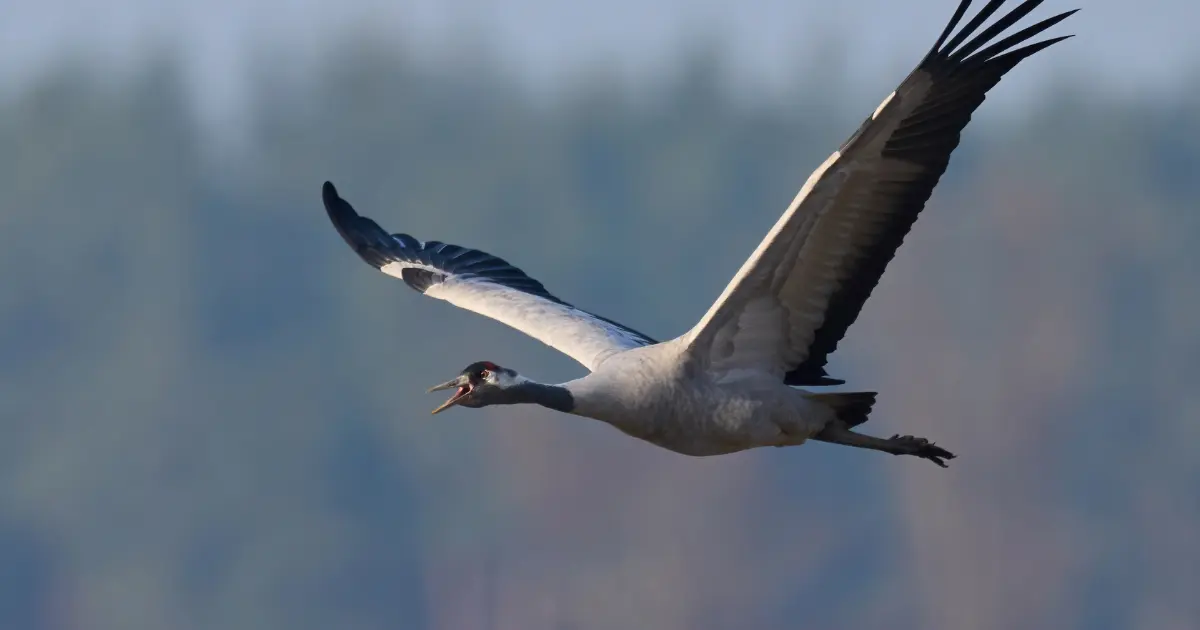
The bar-headed goose: exceptional adaptations for high-altitude flight
The bar-headed goose (Anser indicus), also known as the tiger goose, is a species that amazes with its high-altitude flight capabilities. These birds can reach altitudes close to 8,800 meters, often flying over the Himalayas during their migrations. A 2012 study revealed that these geese generally follow valleys through the mountains, staying mostly below 5,500 meters but occasionally making excursions to higher altitudes for reasons still unexplained.
Bar-headed geese possess several physiological adaptations that facilitate their high-altitude flight, including a higher density of capillaries and red blood cells, allowing for faster oxygen delivery to muscle cells. They also have flight muscles rich in mitochondria, enhancing their energy capacity. Additionally, they can hyperventilate without dizziness, maximizing the oxygen available in their blood, which is crucial for survival in low-oxygen conditions.
In 2009, a team of researchers led by Lucy Hawkes tagged 25 geese with GPS transmitters to track their migration. The results showed that these birds could fly over the Himalayas in a single effort, in about eight hours, despite the extreme challenges posed by such an altitude, including oxygen scarcity and very low temperatures.
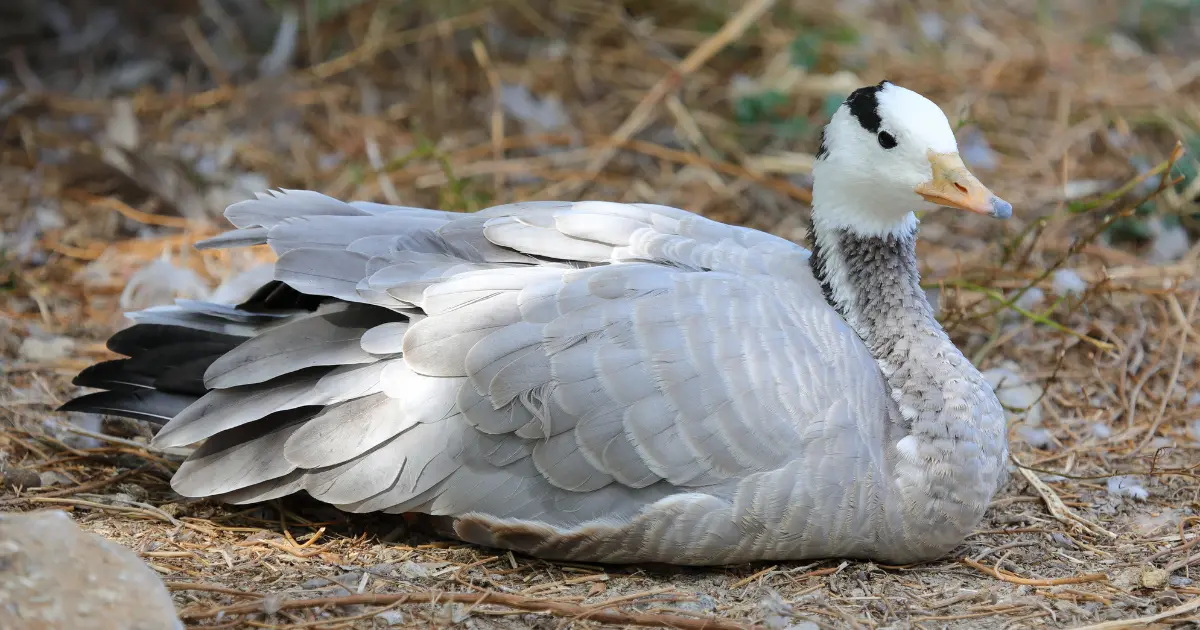
The whooper swan: a resilient high-altitude migrator
The whooper swan (Cygnus cygnus) is another notable bird for its high-altitude flight capabilities. Weighing over 14 kg for some individuals, these birds are known to fly up to 8,200 meters, an altitude recorded by radar over Ireland. Inhabiting the northern hemisphere, particularly Russia, Finland, and Norway, these swans travel long distances during their migration, demonstrating impressive endurance and navigational ability.
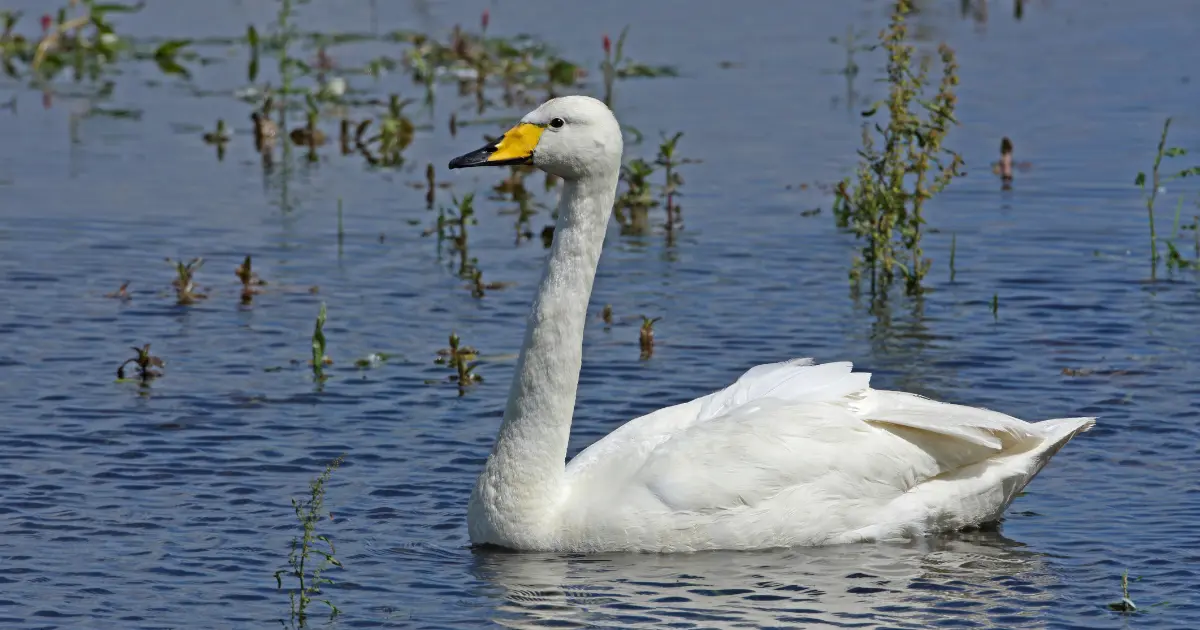
The yellow-billed chough: a mountain passerine
The yellow-billed chough (Pyrrhocorax graculus), also known as the “mountain crow,” is a passerine that inhabits mountainous regions such as the Alps, the Pyrenees, and the Balkans. Measuring about 40 cm in length with a wingspan of 70 to 85 cm, this bird can fly at altitudes up to 8,000 meters, notably above Everest. Although it is generally observed at lower altitudes around 4,000 meters, its ability to reach such heights is remarkable.
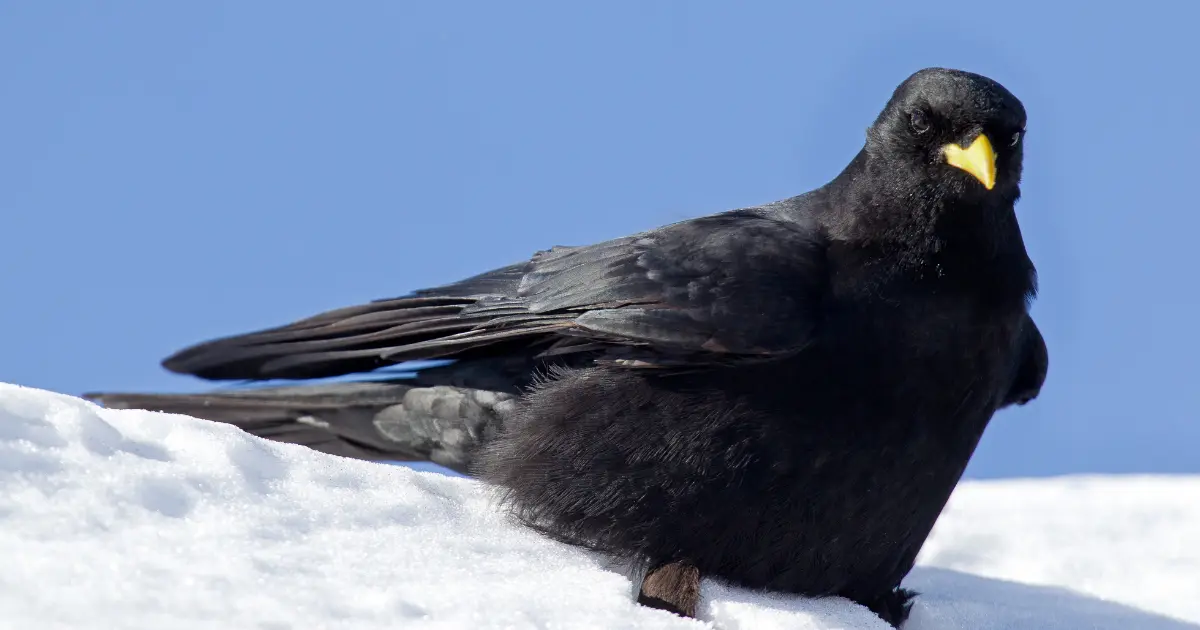
The bearded vulture: a mountain raptor
The bearded vulture (Gypaetus barbatus), another impressive vulture, is adapted to life in high mountains, primarily inhabiting rocky cliffs and ledges in France and other regions of Europe and Central Asia. With a wingspan of 3 meters and a weight ranging between 5 and 7 kg, this bird can fly up to 7,300 meters in altitude, a feat made possible by its physical adaptations similar to those of the Rüppell’s vulture.
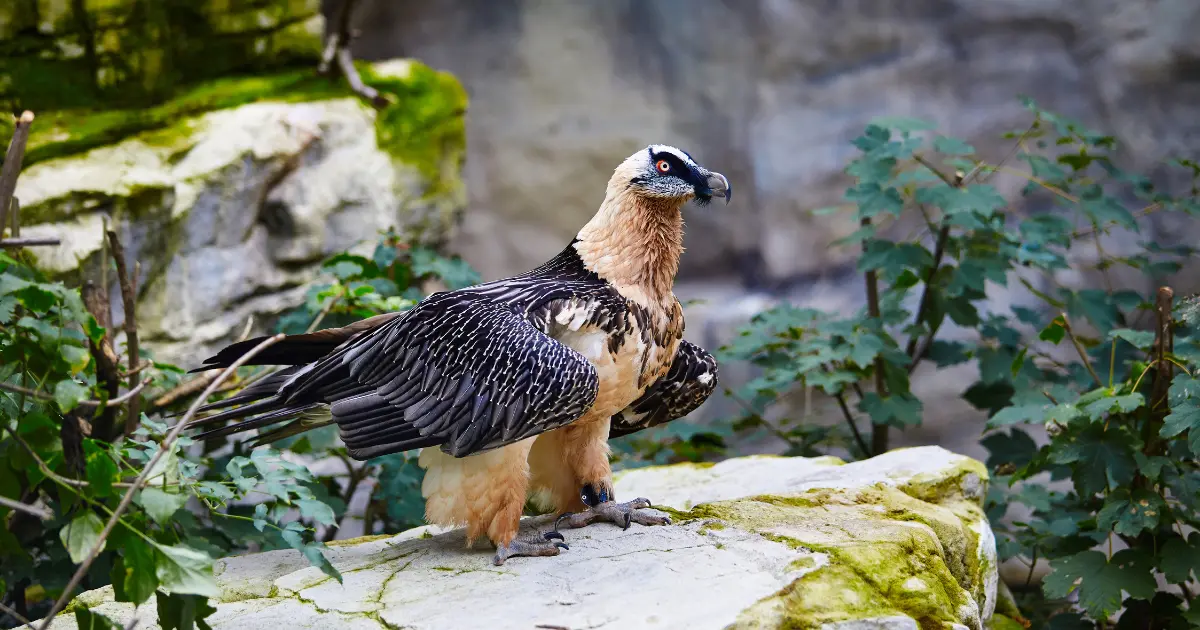
Adaptations and strategies of high-altitude birds
Birds flying at extreme altitudes show notable physiological and behavioral adaptations. For example, bar-headed geese often avoid strong daytime winds and choose to fly at night when conditions are calmer, reducing the risk of unstable flight and accidents. Similarly, these birds prefer to make continuous climbs rather than stop and start again, thereby conserving precious energy.
Visualizing dizzying heights
Comparisons with famous landmarks and notable events help visualize the extraordinary capabilities of these birds. For instance, an average parachute jump reaches up to 4,000 meters, the Burj Khalifa, the tallest skyscraper in the world, measures 830 meters, and Mount Everest peaks at 8,849 meters. In comparison, the flight of a bar-headed goose or a Rüppell’s vulture at altitudes over 8,000 meters shows just how these birds literally dominate the sky.
The high-altitude flight capabilities of these birds demonstrate a remarkable combination of evolutionary adaptations, migratory strategies, and survival behaviors. Whether flying over the Himalayas in a single effort, navigating at dangerously high altitudes, or adapting to changing atmospheric conditions, these birds represent some of the most impressive feats in the animal kingdom. Their study continues to reveal fascinating aspects of animal biology and evolutionary adaptation.
-


